Abstract
Chloroform is a known contaminant of chlorinated drinking water and of swimming pool water disinfected with chlorine or one of its derivatives. Few data exist regarding the importance of dermal and inhalation exposure routes to the chloroform body burden resulting from domestic and recreational use of chlorinated water. In our experimental study involving 11 male swimmers, we quantified the body burden resulting from exposure to various concentrations of chloroform in water and air of an indoor swimming pool, during a daily 55-min exercise period. From the first to the sixth exercise period, CHCl3 mean concentration in water was increased from 159 micrograms/l to 553 micrograms/l. Corresponding mean air CHCl3 level ranged from 597 ppb to 1630 ppb. To dissociate the dermal exposure route from that of inhalation, swimmers used scuba tanks during an additional exercise period. Chloroform concentrations were measured in alveolar air before and after each exercise period, as well as after 35 min of physical activity. Chloroform levels in water and air were measured every 10 min. We examined the relationship between alveolar air concentration (a measure of body burden) at 35 and 55 min and environmental chloroform concentrations by using multiple regression models. The natural logarithm of alveolar air concentration was strongly correlated with aqueous chloroform concentration both at 35 (p2 < 0.001, r2 = 0.75) and 55 min (p < 0.001, r2 = 0.86). The relationship with air concentrations was also statistically significant (35 min: p < 0.001, r2 = 0.58, 55 min: p < 0.001, r2 = 0.63).(ABSTRACT TRUNCATED AT 250 WORDS)
Full text
PDF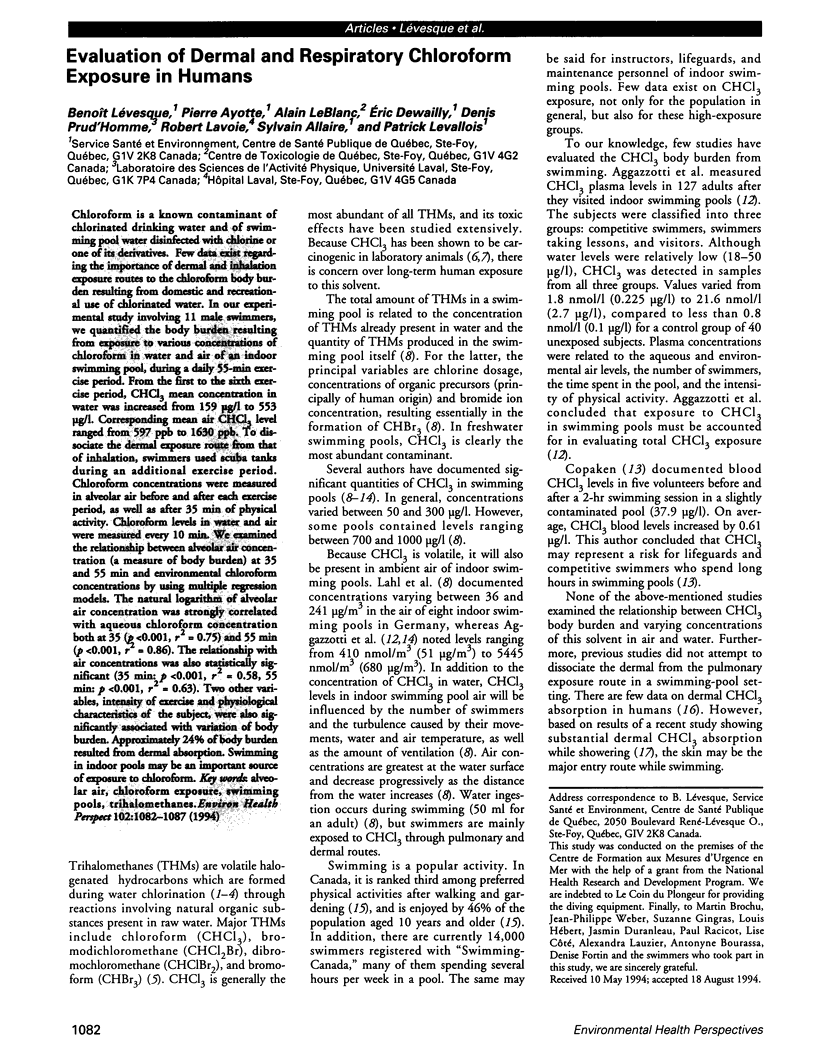
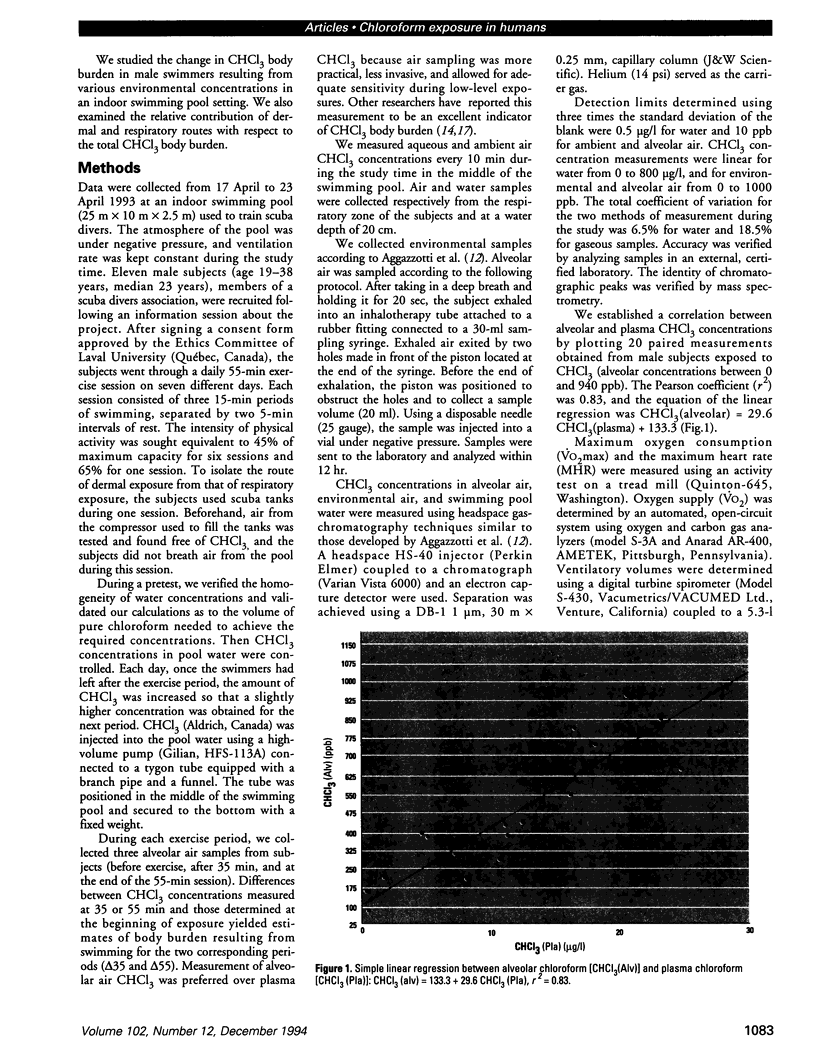
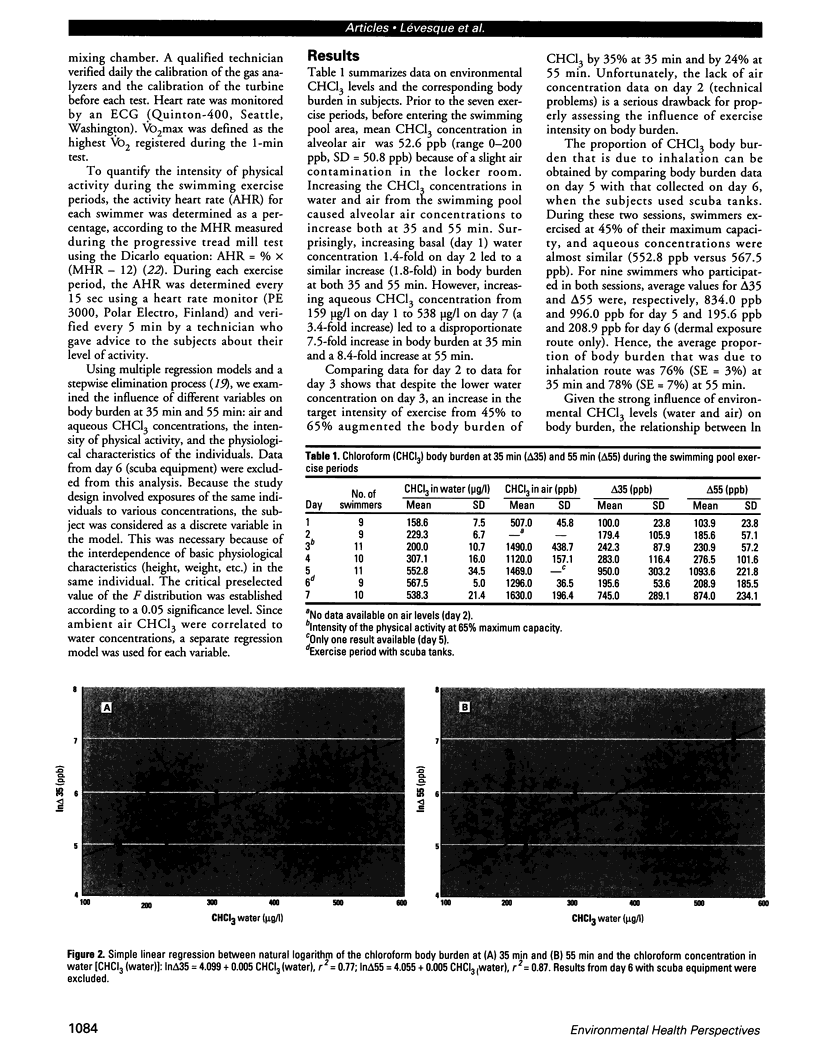
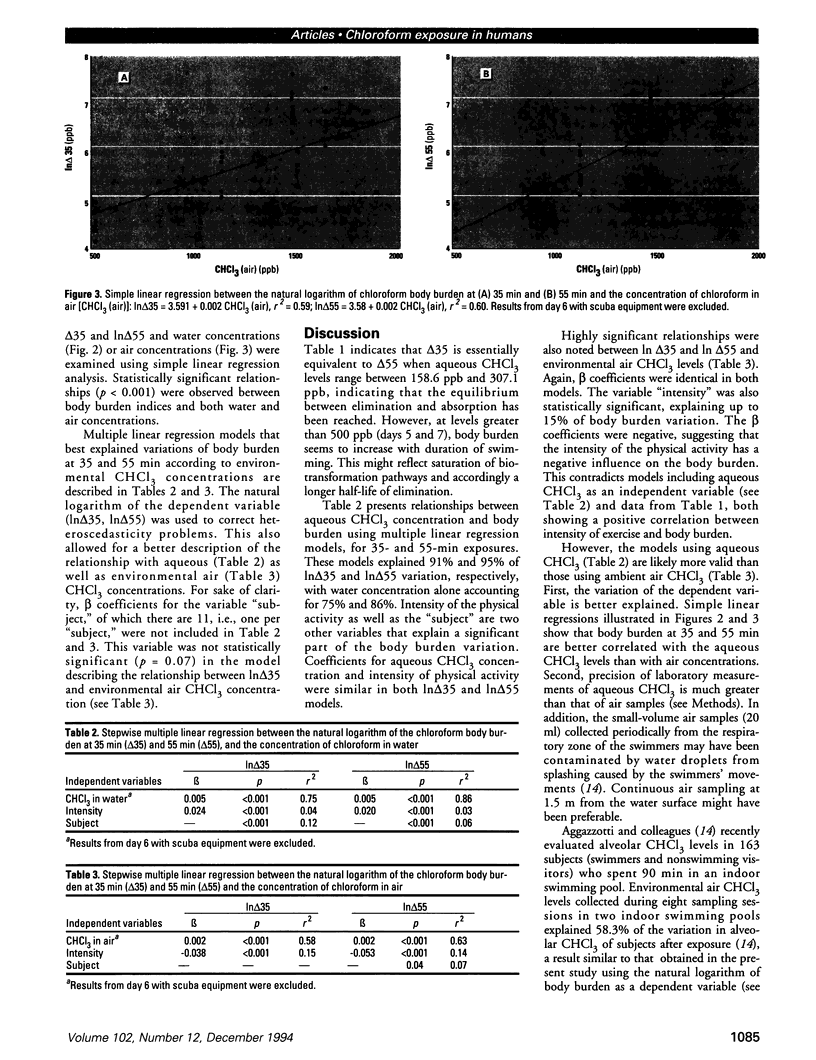
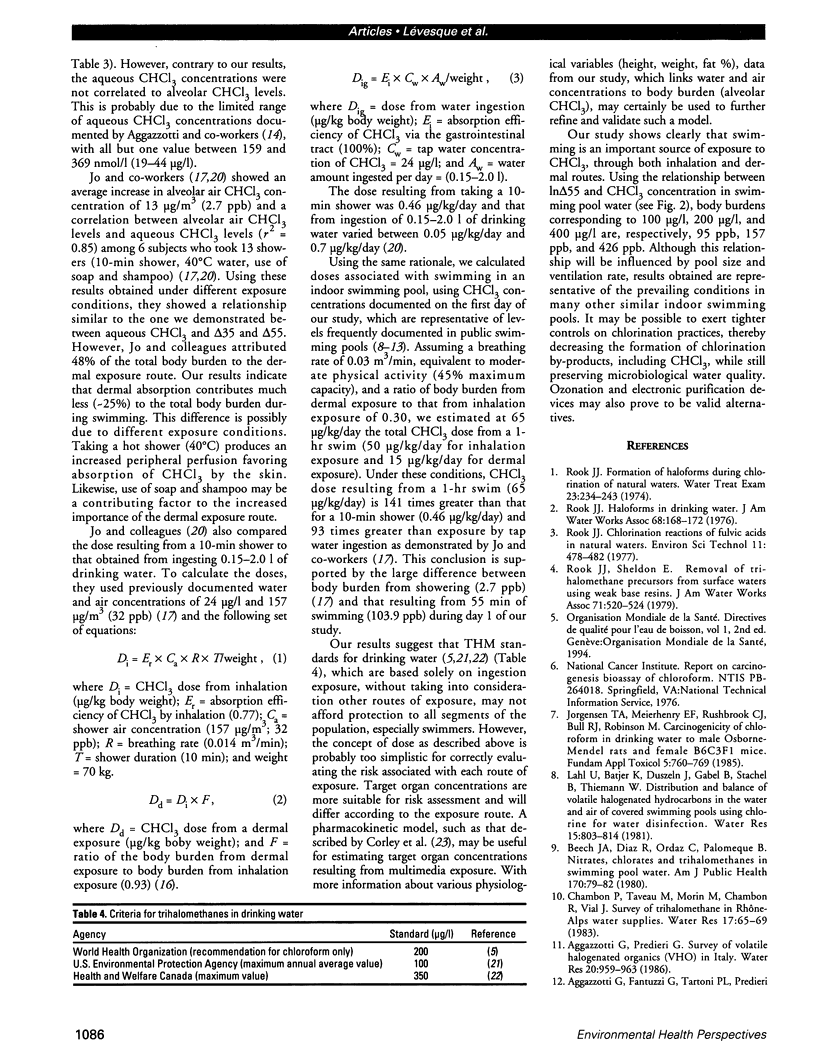
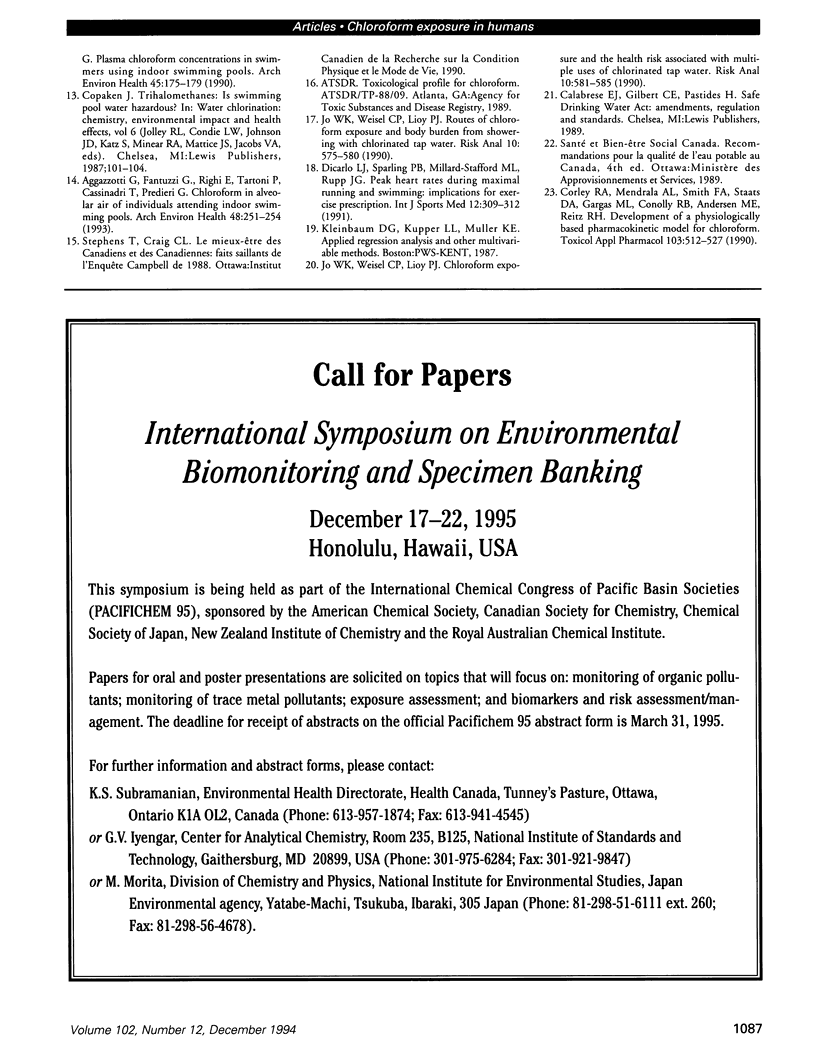
Images in this article
Selected References
These references are in PubMed. This may not be the complete list of references from this article.
- Aggazzotti G., Fantuzzi G., Righi E., Tartoni P., Cassinadri T., Predieri G. Chloroform in alveolar air of individuals attending indoor swimming pools. Arch Environ Health. 1993 Jul-Aug;48(4):250–254. doi: 10.1080/00039896.1993.9940368. [DOI] [PubMed] [Google Scholar]
- Beech J. A., Diaz R., Ordaz C., Palomeque B. Nitrates, chlorates and trihalomethanes in swimming pool water. Am J Public Health. 1980 Jan;70(1):79–82. doi: 10.2105/ajph.70.1.79. [DOI] [PMC free article] [PubMed] [Google Scholar]
- Corley R. A., Mendrala A. L., Smith F. A., Staats D. A., Gargas M. L., Conolly R. B., Andersen M. E., Reitz R. H. Development of a physiologically based pharmacokinetic model for chloroform. Toxicol Appl Pharmacol. 1990 May;103(3):512–527. doi: 10.1016/0041-008x(90)90324-n. [DOI] [PubMed] [Google Scholar]
- DiCarlo L. J., Sparling P. B., Millard-Stafford M. L., Rupp J. C. Peak heart rates during maximal running and swimming: implications for exercise prescription. Int J Sports Med. 1991 Jun;12(3):309–312. doi: 10.1055/s-2007-1024687. [DOI] [PubMed] [Google Scholar]
- Jo W. K., Weisel C. P., Lioy P. J. Chloroform exposure and the health risk associated with multiple uses of chlorinated tap water. Risk Anal. 1990 Dec;10(4):581–585. doi: 10.1111/j.1539-6924.1990.tb00542.x. [DOI] [PubMed] [Google Scholar]
- Jo W. K., Weisel C. P., Lioy P. J. Routes of chloroform exposure and body burden from showering with chlorinated tap water. Risk Anal. 1990 Dec;10(4):575–580. doi: 10.1111/j.1539-6924.1990.tb00541.x. [DOI] [PubMed] [Google Scholar]
- Jorgenson T. A., Meierhenry E. F., Rushbrook C. J., Bull R. J., Robinson M. Carcinogenicity of chloroform in drinking water to male Osborne-Mendel rats and female B6C3F1 mice. Fundam Appl Toxicol. 1985 Aug;5(4):760–769. doi: 10.1016/0272-0590(85)90200-3. [DOI] [PubMed] [Google Scholar]







